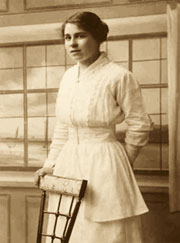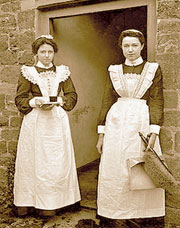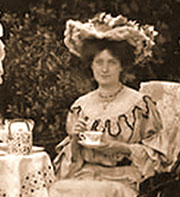Learn more about Pallasart Web Design's Creative Talent - Meet Our Team of Programmers and Designers
Preparing and Serving Butter
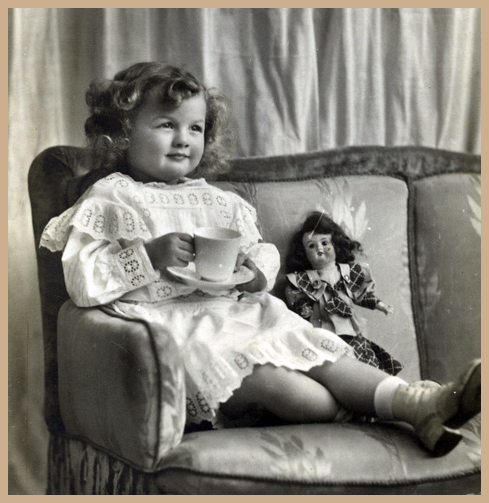 Butter is served at breakfast, luncheon, and supper, but not at a formal dinner. If the luncheon take the form of a formal luncheon party, the small butter plate is thought preferable to the bread-and-butter plate, which is more Bohemian in character. Often neither appears. At a formal dinner, the menu of which abounds in rich sauces, butter is regarded as a superfluity, since each dish is supposed to be perfect as it is, or with the accessories provided as accompaniment
Butter is served at breakfast, luncheon, and supper, but not at a formal dinner. If the luncheon take the form of a formal luncheon party, the small butter plate is thought preferable to the bread-and-butter plate, which is more Bohemian in character. Often neither appears. At a formal dinner, the menu of which abounds in rich sauces, butter is regarded as a superfluity, since each dish is supposed to be perfect as it is, or with the accessories provided as accompaniment
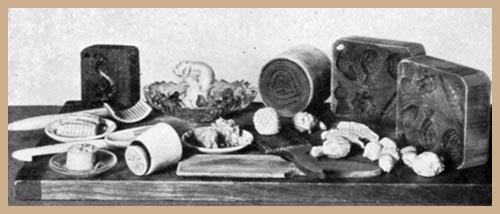 Above: Butter Moulds and Shapes of Butter
Above: Butter Moulds and Shapes of Butter
At a family dinner, especially if children, for whom sauces are not desired, are given a place at table, butter should be in readiness for use on the sideboard. The sideboard, rather than the serving or side table, seems to be the natural place for the disposition of this article, as here hot dishes, the vicinity of which would be prejudicial to the appearance of butter, do not appear.
The appearance of the butter and the temperature at which it is served may seem very trifling matters, perhaps ; but it is in the painstaking attention to just such little details as these that the true capability of a waitress is manifested.
Occasionally there are homes to which table butter is sent that has been worked at the time of churning into tiny half-ounce cakes, just large enough for a single service. By this means, if the butter be carefully manipulated during the washing and salting, the original, granular consistency of the substance is retained. This consistency is always looked for by those who are conversant with the quality of good butter. But, when the butter for table use is sent to the house in a firkin or box, as is usually the case, then the waitress needs to exercise great care in "working over" the butter, to manipulate it as little as possible, that the desirable texture be not lost. Let her remember to handle it just as little as possible, and never with anything but properly prepared wooden utensils reserved for this purpose.
As some little time is required to get the necessary spoon, bowl, butter hands, and moulds in suitable condition to use, it will be well to take some favorable opportunity, and make a business of preparing, at one time, the butter for several days. It should then be set away, carefully covered, in the compartment of the refrigerator that is reserved for butter, cream, and milk.
TO SHAPE BUTTER
First of all put the moulds, butter hands, or whatever articles are to be used, into a wooden bowl filled with boiling water, and let stand about half an hour, replenishing the water as needed, to keep the same at a high temperature. Then empty the bowl of water, and refill with cold water, adding ice at the last, if the weather be warm. When the utensils are thoroughly chilled, put the butter into the bowl of cold water, and with the spoon work it, until It be of a consistency to shape, but not a moment longer. To shape into balls, cut off a level tablespoonful, and roll between the butter hands and drop on to a cold plate, keeping each ball separate. Chill before piling into a butter dish. Be careful to dip the moulds, paddles, or"hands" into the cold water after each shaping of butter.
At those meals where butter is served, two minutes before announcing the meal, with a silver pick put a butter ball on each plate, and set a dish with a reserve supply and a butter pick upon the sideboard. Butter dishes are made with a reservoir below the butter for bits of ice. With this arrangement, when a second serving is required, the waitress needs to take care to drain the water from the melting ice before the dish is passed.
Individual moulds, also moulds to shape a half or quarter pound of butter, are shown in the illustration. The manner of use is the same in both cases. Invert the mould, and let the stamp drop to the bottom of the mould. Then fill the mould with butter, turn it over, and with the stamp press out the butter on to a chilled plate. Let the butter chill thoroughly before using. A quarter or half pound cake of butter is served with a knife. The waitress may cut and serve, the butter dish resting meanwhile on a tray, or she may pass it to the left of the person to be served, who may then cut the butter and place it upon the special plate pro-vided for this purpose. A dish of butter may be garnished with two or three fresh clover leaves and blossoms or with a sprig or two of cress or parsley, or with nasturtium leaves and blossoms.
